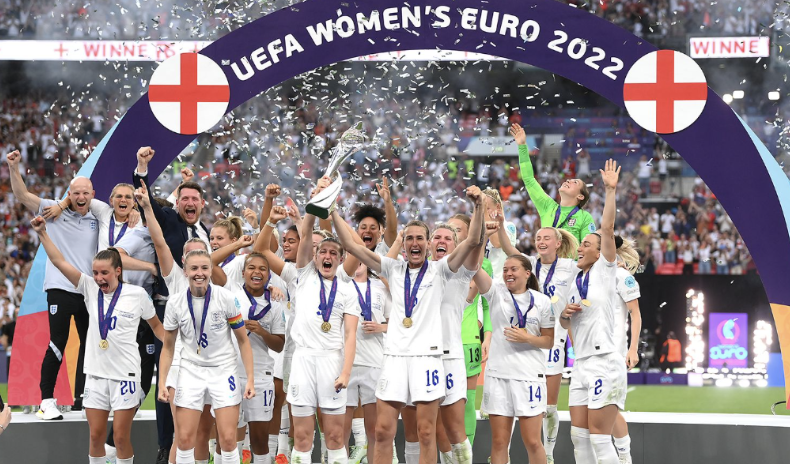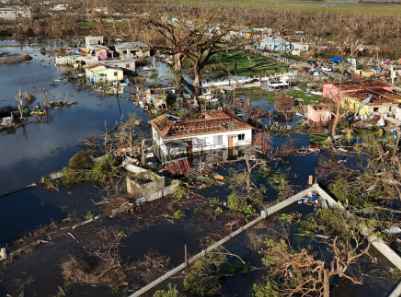The stadium hums: flags wave, drums beat, and every pass and tackle sends waves of excitement through the crowd — the air is crackling with passion. Is it the Football Association (FA) Cup? The Champions League final? The World Cup? No, it’s the 2025 Women’s European Cup. It’s a powerful sign of how women’s football is not only catching up, it’s becoming a global force in its own right.
The numbers tell a story that would have seemed impossible just a decade ago. According to ESPN, the group stage of the Women’s European Cup (Euros), which finished on Sunday, had record-breaking attendance with over 600,000 aggregate fans attending 31 games — of which 22 were completely sold out. Meanwhile, online interactions with the Women’s Euros during the group stages increased by 55% compared to the previous Euros in 2022, according to UEFA.
But behind these headline-grabbing moments is a more structural shift, with major women’s leagues across Europe undergoing fundamental changes in infrastructure, investment, and fan culture that extend beyond the headline-worthy stats.
The groundwork for today’s growth was laid out in the mid-2010s, when major European clubs began treating their women’s teams as assets, rather than just an afterthought. Manchester City F.C., for example, moved their women’s team to the same training facilities as their men’s team in 2014, with Chelsea F.C. soon following suit.
In Spain, the transformation was even more dramatic. For example, F.C. Barcelona’s commitment to their women’s team (Barcelona Femeni) led to initiatives such as the creation of female-specific youth academies, among other efforts. This produced results beyond their dominance on the pitch. In fact, Barcelona Femeni received 17.9 million Euros in revenue during the 2023-24 season, placing them at the top of Deloitte’s Women’s Football Money League for the third year in a row, marking a 26% year‑on‑year growth.
Following Barcelona’s example, top clubs from across Europe have continued to invest into their women’s programs. More specifically, in the infrastructure surrounding women’s soccer. Stadiums began upgrading the changing rooms — which had previously been used as storage space — with features that only the men’s teams used to have, such as physio areas, tactical briefing rooms and more. Medical staff began receiving specialized training in women’s sports medicine. Even seemingly small details, like ensuring adequate lighting for evening training, became priorities as clubs realized professional female players required professional environments. These changes weren’t limited to clubs — whole organizations began making changes. A standout example was the Romanian Football Association (RFA) which, according to Euronews, mandated all top-level men’s teams to establish women’s teams by 2020.
As a result of these changes, Insider Sport reports a 24% attendance increase across Europe’s top Women’s leagues – Germany’s Frauen-Bundesliga, England’s WSL, Spain’s Liga F, and France’s D1 – during the 2023-24 season alone, with the WSL showing a staggering 41% growth.
The ripple effect of these investments became apparent as they progressed. As clubs professionalized their women’s teams, they attracted better coaches and created better players, which improved the tactics and gameplay of women’s football matchings, making them more entertaining for fans.
That entertainment is drawing in new fans, even those who never followed soccer before. Sebastian Nudleman (’27), who only recently started attending San Diego Wave (San Diego’s women’s soccer team) games, explained, “I don’t play soccer and nobody in my family really watches soccer outside of the World Cup… I have been to a couple games with family and friends… and going to the games is fun.” He added that Snapdragon Stadium “almost sell[s] out the seats” and the experience “feel[s] like any other professional sports game… there’s lots of hype and energy.”
Television coverage of women’s sports likely represents the most visible change. For example, SkySport’s investment into the English Women’s Super League — broadcasting 70% of WSL matches (more than any other broadcaster) — has been a key factor in driving overall growth. The broadcaster reports that between 2021 — when SkySports began broadcasting WSL matches — and early 2024, pay‑TV viewership has increased four‑fold.
Furthermore, the scheduling of women’s fixtures has been an underrated development. Women’s matches used to be relegated to Tuesday afternoons or scheduled against major men’s fixtures, where attendance and interaction would be much lower. Now, however, the Telegraph reports that leagues are beginning to coordinate, maximizing viewership for both men and women, with the top level men’s league in England, the Premier League, and the WSL actively avoiding scheduling conflicts.
The commentary quality has also markedly improved as broadcasters invest in analysts who understand the tactical nuances of women’s soccer rather than simply applying men’s soccer frameworks. For instance, during the UEFA Women’s Euro 2025 final between England and Spain, The Sun notes that viewers were praising ITV’s pundit and commentary setup. The primary reason that fans cited was the insight of experts like Emma Hayes, Ian Wright, and Karen Carney. Both women were former top-level players, whose analysis was clearly valued by the fanbase.
These transformations have created a foundation for sustainable, long-term growth in women’s soccer. Investments have been seeping into everyday systems, training grounds, coaching staff, nutrition, mental health support, etc. A 2024 FIFA report noted that over 65% of top European clubs now provide full-time staff for women’s team operations, something that highlights how far these changes have come.
This shift isn’t limited to the elite level. The pipeline from youth academies to professional play for women used to be fragmented, yet now it is becoming clearer and more navigable. According to UEFA, 85% of clubs in Europe’s top leagues now have an academy dedicated for girls, a number which has doubled in the past five years. The level of coaching these girls receive has been rising as well. The European Club Association (ECA) reported that 40% of women’s youth coaches now have a UEFA B license or higher, registering them competent enough to act as assistant coaches for professional clubs.
At the same time, the fan engagement has matured into something more deeply rooted in the community and authenticity. Research from UEFA found that women’s soccer fans often valued inclusivity and accessibility, leading to the Women’s Euro 2025 to be designed as a family-friendly and accessible event with affordable ticket pricing and activities for all ages.
Women’s soccer has transformed from a niche sport into a thriving, professional game with passionate fans and growing investment. The 2025 Women’s European Cup highlights this progress. With continued support, women’s soccer is set for a bright future.








